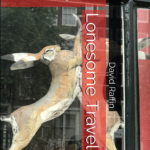The most Revolutionary of the US Founding Fathers, Thomas Paine, a key figure in the US and French Revolution and author of Common Sense (1776), Rights of Man (1791), and The Age of Reason (1807), among others.
He advocated Universal Suffrage, A Guaranteed Minimum Income, and the Abolishment of Slavery.
Only six mourners came to his funeral, two of whom were black, most likely freedmen. The writer and orator Robert G. Ingersoll wrote:
Thomas Paine had passed the legendary limit of life. One by one most of his old friends and acquaintances had deserted him. Maligned on every side, execrated, shunned and abhorred – his virtues denounced as vices – his services forgotten – his character blackened, he preserved the poise and balance of his soul. He was a victim of the people, but his convictions remained unshaken. He was still a soldier in the army of freedom, and still tried to enlighten and civilize those who were impatiently waiting for his death. Even those who loved their enemies hated him, their friend – the friend of the whole world – with all their hearts. On the 8th of June, 1809, death came – Death, almost his only friend. At his funeral no pomp, no pageantry, no civic procession, no military display. In a carriage, a woman and her son who had lived on the bounty of the dead – on horseback, a Quaker, the humanity of whose heart dominated the creed of his head – and, following on foot, two negroes filled with gratitude – constituted the funeral cortege of Thomas Paine.
After his death, Paine’s body was brought to New Rochelle, but the Quakers would not allow it to be buried in their grave-yard as per his last will, so his remains were buried under a walnut tree on his farm. In 1819, the English agrarian radical journalist William Cobbett, who in 1793 had published a hostile continuation of Francis Oldys (George Chalmer)’s The Life of Thomas Paine, dug up his bones and transported them back to England with the intention to give Paine a heroic reburial on his native soil, but this never came to pass. The bones were still among Cobbett’s effects when he died over twenty years later, but were later lost. There is no confirmed story about what happened to them after that, although throughout the years, various people have claimed to own parts of Paine’s remains, such as his skull and right hand.

















 RSS - Posts
RSS - Posts
